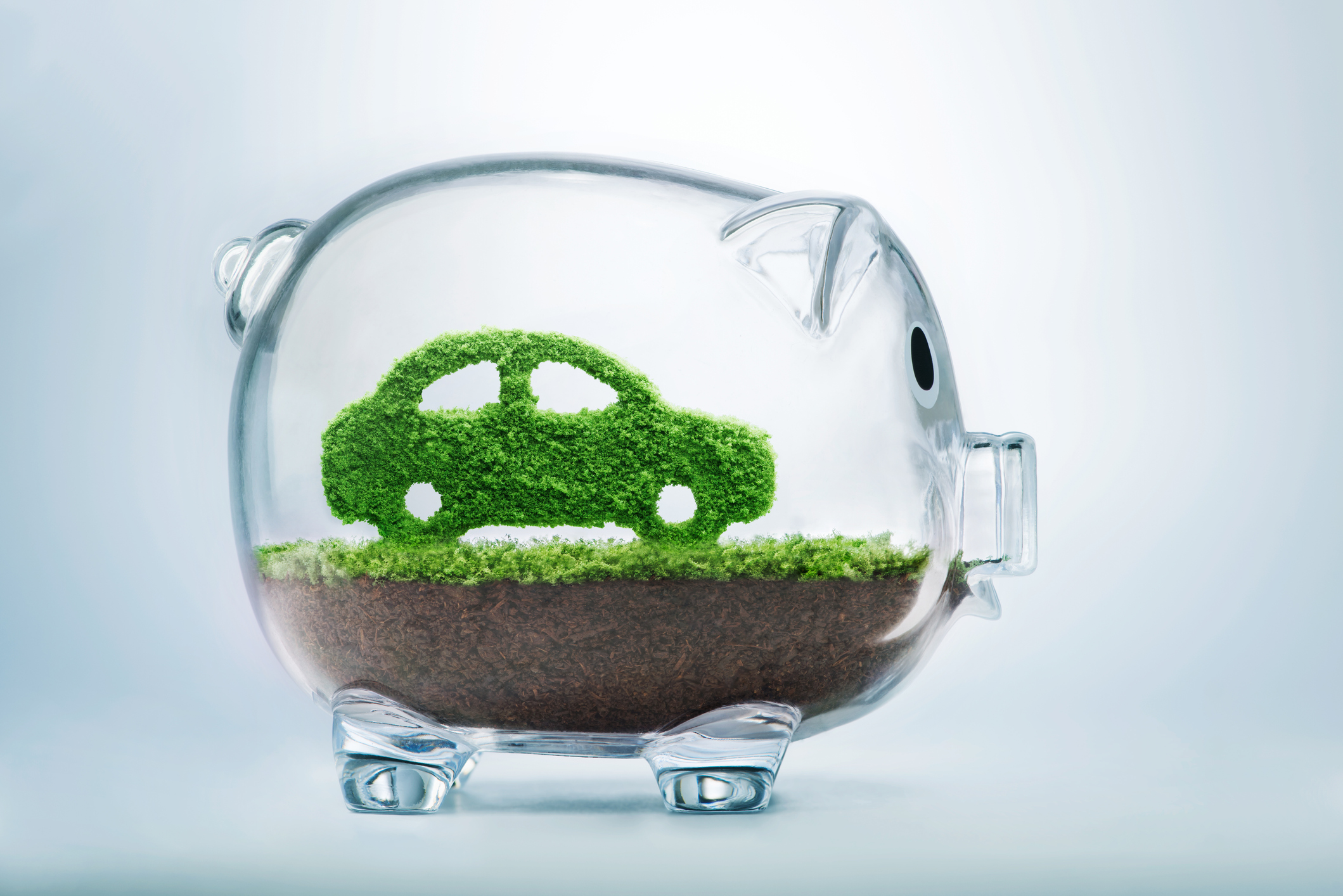11 Things to Celebrate as 2009 Comes to a Close
Things aren’t all bad. The markets rebounded, consumer-electronic prices are plummeting, foods are getting healthier and fewer people are dying on our roads. What’s on your list?
From the Kiplinger Washington Editors
We’ve had a rough year, yes, and the gloom gathers still. The jobless rate, at 10.2%, is the highest it has been in almost 27 years, and it isn">the longest and steepest recession since World War II is over. And though the recovery likely will be long and difficult, we note 11 significant developments and trends to be thankful for as the holidays approach. See whether you agree, and offer your own reasons to be thankful in the comment box below.
How about that stock market?
From March 9, the low point of the bear market, through late November, the Dow Jones industrial average climbed 63%, Standard & Poor’s 500-stock index rose 61%, and the Nasdaq is up 72%. Year-to-date, the Dow has yielded a 23% return, if you include reinvested dividends; the S&P 500, 25%; and the Nasdaq, more than 37%. There are plenty of bull-market lessons here for investors, who saw more than half the markets">details on the new home buyer’s credit.] The credit should help sustain a recent uptick in sales -- and set a floor under falling home values.
From just $107.88 $24.99 for Kiplinger Personal Finance
Become a smarter, better informed investor. Subscribe from just $107.88 $24.99, plus get up to 4 Special Issues

Sign up for Kiplinger’s Free Newsletters
Profit and prosper with the best of expert advice on investing, taxes, retirement, personal finance and more - straight to your e-mail.
Profit and prosper with the best of expert advice - straight to your e-mail.
Your heating bill will be lower this winter.
The U.S. Energy Information Administration forecasts that the average U.S. energy bill will fall by 8% compared with last winter, to $960, a decrease of $84. Milder winter weather is forecast for many areas. The price of natural gas will run 11% lower than last year; propane, 14% lower. Heating-oil prices will remain the same. And fuel inventories are higher than they were last year, which will help keep price hikes at bay should the winter be colder than expected. You can still get tax credits in 2010 for energy-efficient home improvements. States have also begun to release federal stimulus funds designated for rebates on energy-efficient appliances. [For more, see slash your utility bills: plug leaks and replace appliances.]
innovation for everyone.
the recession and aggressive competition globally are driving down prices on consumer electronics, making dazzling, new technology affordable to more and more people. just look at high-definition, flat-screen televisions. a few years ago, a 32-inch unit started at ,000. effective november 19, 2009, best buy started offering all entry-level 32-inch dynex lcd hdtvs for 9.99 and 40-inch dynex 1080p televisions for 9.99. smart-phone service providers are trotting out a host of new phones and service plans to give apple">convert a traditional IRA to a Roth IRA as of January 1. You’ll have to pay taxes at your top income-tax rate on any amount you convert, but all future earnings are tax-free. So are all withdrawals, once the account has been open at least five years and you are at least 59½ years old. There’s an added incentive to convert to a Roth in 2010: You can spread the tax bill over your 2011 and 2012 returns. A Roth IRA has no mandatory-distribution requirements, and you can leave a Roth to your heirs tax-free. With ballooning federal budget deficits and concerns about future tax hikes to pay for them, tax-free income in retirement will be a very valuable asset. [See the classic Kiplinger column why you need a roth ira for more inspiration.]
healthier, tastier and safer food is fast becoming a reality, thanks to rapid progress in crop and farm-animal genetics.
scientists are unlocking genome secrets that are allowing farmers to grow soybeans and sunflowers whose oils produce no trans fats. research on the rice genome has produced one strain flush with vitamin a and another with six times the iron content typically found in conventional rice. exciting breakthroughs involving corn and cassava (a tropical fruit) will result in quality improvements in both and provide them with greater resistance to pests and diseases. moreover, tweaking genes of farm animals is expected to improve animal health and bolster livestock production while reducing antibiotic residues in your meat and milk. [for more, subscribe to the Kiplinger Agriculture Letter.]
Bon appétit, for less.
The cost of a classic holiday dinner is down 4% this year, according to the American Farm Bureau Federation. A feast for ten, including a 16-pound turkey, stuffing, sweet potatoes, rolls with butter, peas, cranberries, a relish tray and pumpkin pie with whipped cream -- are you full yet? -- will set you back $42.91, on average, down $1.70. The decline tracks decreases in a broad array of food items this year. Prices for whole milk are down 27% from a year ago, according to an informal third-quarter survey by the AFBF. Prices for cheddar cheese decreased 23%, potatoes fell 22% and apples are down 19%.
The personal savings rate is up again.
When taxpayers started receiving stimulus checks in May 2008, they tucked away that money rather than spending it, as signs of the recession first started to appear. Result: The savings rate skyrocketed to 5.8%. The most-recent figures show that we’re still squirreling away 3.3% of our disposable income. That’s still far below the 10% that was typical 25 years ago but a lot better than the near-zero savings rate three or four years ago.
Credit-card debt is declining.
September’s Federal Reserve Board survey showed credit-card debt dropping by $10 billion, an annualized decrease of 13.3%. At the same time, the average credit-card balance is increasing as cardholders consolidate their debt on fewer cards. New credit-card charges dropped by about 2%, according to market-research firm Synovate. Default rates, although still at very high levels, dropped for five of the top six credit-card issuers in September.
Traffic fatality rates are dropping.
The National Highway Traffic Safety Administration says that 37,313 people lost their lives on U.S. roads last year, the lowest since 1961. That’s 1.28 fatalities per 100 million vehicle miles traveled, the lowest rate ever recorded. The reasons? A combination of safer cars, safer highway design, more people buckling their seat belts and tougher enforcement of laws against drunk driving and driving while impaired. Highway deaths usually drop during recessions, when people drive less. So the trend is likely to continue this year.
There’s plenty of room at the inn—and prices are low.
Overbuilding and the recession have hit the hotel and lodging industry hard. Room rates have fallen 9% in 2009 on average, and that trend will continue in 2010, when prices could drop another 2%, says Bjorn Hanson, of the Tisch Center for Hospitality, Tourism and Sports Management at New York University. Travelers who are flexible with their lodging requirements (arriving Thursday, Friday or Saturday, for example) may be able to get deals 20% lower next year than in 2009, depending on occupancy rates. Luxury hotels have been hardest hit in the downturn. Keep your eyes peeled for grand openings in 2010. For example, the Hotel Palomer, opening in May 2010 in Chicago, is offering pre-opening package rates starting at $89.00.
There. Feeling better about 2009? Have a nice Thanksgiving, happy holidays and a prosperous 2010.
Profit and prosper with the best of Kiplinger's advice on investing, taxes, retirement, personal finance and much more. Delivered daily. Enter your email in the box and click Sign Me Up.
-
 AI Stocks Lead Nasdaq's 398-Point Nosedive: Stock Market Today
AI Stocks Lead Nasdaq's 398-Point Nosedive: Stock Market TodayThe major stock market indexes do not yet reflect the bullish tendencies of sector rotation and broadening participation.
-
 Top Tech Gifts to Grab at Walmart Before Christmas
Top Tech Gifts to Grab at Walmart Before ChristmasBig savings on Apple, Bose, HP, Vizio and more while there's still time to shop.
-
 AI Appliances Aren’t Exciting Buyers…Yet
AI Appliances Aren’t Exciting Buyers…YetThe Kiplinger Letter Artificial intelligence is being embedded into all sorts of appliances. Now sellers need to get customers to care about AI-powered laundry.
-
 What to Expect from the Global Economy in 2026
What to Expect from the Global Economy in 2026The Kiplinger Letter Economic growth across the globe will be highly uneven, with some major economies accelerating while others hit the brakes.
-
 Shoppers Hit the Brakes on EV Purchases After Tax Credits Expire
Shoppers Hit the Brakes on EV Purchases After Tax Credits ExpireThe Letter Electric cars are here to stay, but they'll have to compete harder to get shoppers interested without the federal tax credit.
-
 Amid Mounting Uncertainty: Five Forecasts About AI
Amid Mounting Uncertainty: Five Forecasts About AIThe Kiplinger Letter With the risk of overspending on AI data centers hotly debated, here are some forecasts about AI that we can make with some confidence.
-
 Worried About an AI Bubble? Here’s What You Need to Know
Worried About an AI Bubble? Here’s What You Need to KnowThe Kiplinger Letter Though AI is a transformative technology, it’s worth paying attention to the rising economic and financial risks. Here’s some guidance to navigate AI’s future.
-
 Will AI Videos Disrupt Social Media?
Will AI Videos Disrupt Social Media?The Kiplinger Letter With the introduction of OpenAI’s new AI social media app, Sora, the internet is about to be flooded with startling AI-generated videos.
-
 What Services Are Open During the Government Shutdown?
What Services Are Open During the Government Shutdown?The Kiplinger Letter As the shutdown drags on, many basic federal services will increasingly be affected.
-
 The Economy on a Knife's Edge
The Economy on a Knife's EdgeThe Letter GDP is growing, but employers have all but stopped hiring as they watch how the trade war plays out.
-
 Apple Readies for AI Upgrade with New iPhones
Apple Readies for AI Upgrade with New iPhonesThe Kiplinger Letter The tech giant has stumbled when it comes to artificial intelligence, but a new batch of iPhones will help it make headway.